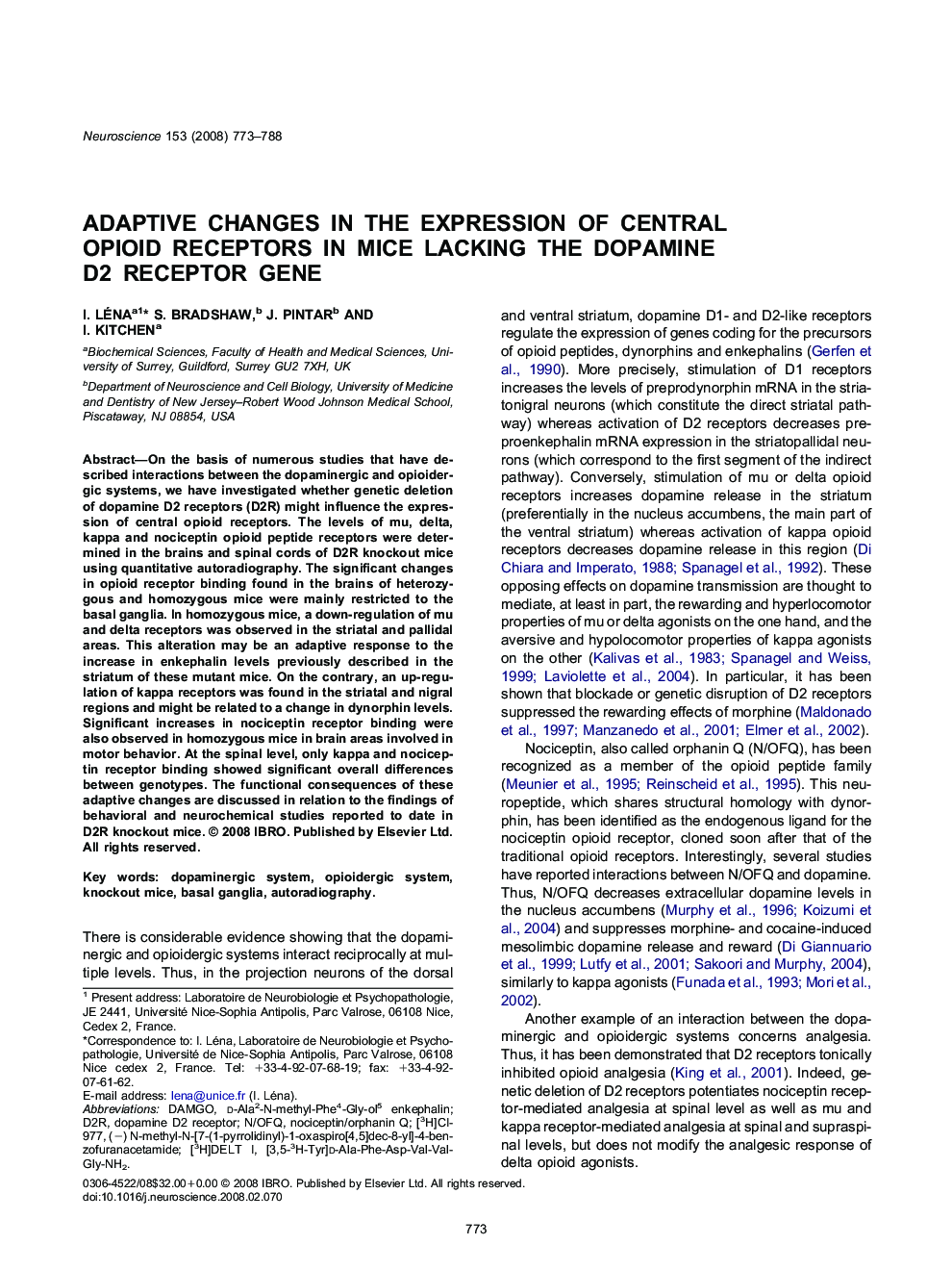| Article ID | Journal | Published Year | Pages | File Type |
|---|---|---|---|---|
| 4341993 | Neuroscience | 2008 | 16 Pages |
Abstract
On the basis of numerous studies that have described interactions between the dopaminergic and opioidergic systems, we have investigated whether genetic deletion of dopamine D2 receptors (D2R) might influence the expression of central opioid receptors. The levels of mu, delta, kappa and nociceptin opioid peptide receptors were determined in the brains and spinal cords of D2R knockout mice using quantitative autoradiography. The significant changes in opioid receptor binding found in the brains of heterozygous and homozygous mice were mainly restricted to the basal ganglia. In homozygous mice, a down-regulation of mu and delta receptors was observed in the striatal and pallidal areas. This alteration may be an adaptive response to the increase in enkephalin levels previously described in the striatum of these mutant mice. On the contrary, an up-regulation of kappa receptors was found in the striatal and nigral regions and might be related to a change in dynorphin levels. Significant increases in nociceptin receptor binding were also observed in homozygous mice in brain areas involved in motor behavior. At the spinal level, only kappa and nociceptin receptor binding showed significant overall differences between genotypes. The functional consequences of these adaptive changes are discussed in relation to the findings of behavioral and neurochemical studies reported to date in D2R knockout mice.
Keywords
Related Topics
Life Sciences
Neuroscience
Neuroscience (General)
Authors
I. Léna, S. Bradshaw, J. Pintar, I. Kitchen,
